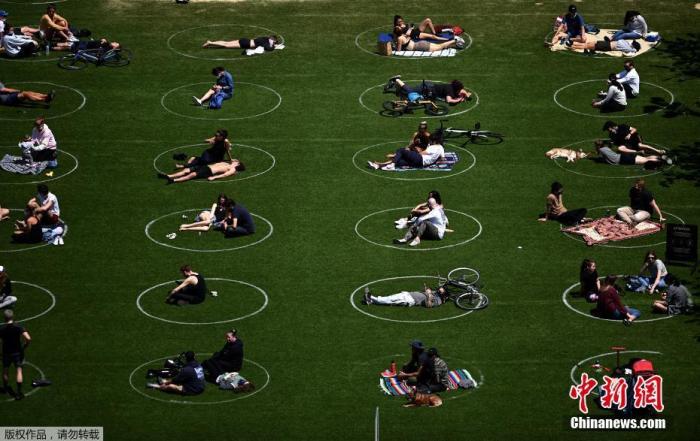(Fighting against New Coronary Pneumonia) "Looking Down" and "Looking Down" The US's "Anti-epidemic" Is Criticized for Ignoring Vulnerable Groups
China News Service, Beijing, May 18: Johns Hopkins University released the epidemic data. As of 6:00 on the 18th, Beijing time, there have been more than 1.48 million diagnoses of new coronary pneumonia in the United States and more than 89,000 deaths. Recently, the US media intensively disclosed that “more than one-third of the deaths of American New Coronary Pneumonia came from nursing homes” and “14% of American adults chose to abandon the treatment of New Coronary Pneumonia due to high costs”.
On the one hand, old-age care institutions have been neglected, and the elderly “look down” and are forced to “sacrifice”; on the other hand, low-income people choose to give up treatment because they are worried about “look down”. The U.S. government, which always advertises that all human beings are equal, is self-reliant as a human rights defender, but has ignored the interests of vulnerable groups when choosing a route to fight against the epidemic. It has been widely criticized by public opinion.
On May 17, local time, in Brooklyn, New York, the United States, people enjoyed the weekend in the white circle in Domino Park.
The elderly become "victims" of the epidemic
The latest statistics show that more than one-third of the deaths from new coronary pneumonia in most US states come from long-term care institutions such as nursing homes. Since the outbreak in the United States, the elderly have been neglected as a susceptible and high-risk group of new coronary pneumonia. In the allocation of medical resources, the government has repeatedly "retired" pension institutions. Some politicians even openly called on the elderly to "sacrifice" the recovery of the economy.
American "Atlantic Monthly", "New York Times" and other authors pointed out that the lack of investment, low salaries, staff shortages, and lack of medical supplies in elderly care institutions in the United States are the reasons for the concentration of deaths in nursing homes. A number of US media have denounced the US government for its “lack of response”: “U.S. officials have been slow to prepare for and protect the elderly care institutions and assisted living institutions from the outset. It is practically impossible to stop the virus in the nursing homes. propagation."
In addition, some American politicians openly called on the elderly to "sacrifice" the economic recovery for political benefit. This attitude of disregarding the people's right to life and health caused uproar from all walks of life. Michael Ryan, WHO health emergency project leader, pointed out: "Some countries think that even if they do nothing, they will suddenly achieve group immunization, even if some old people are lost in the process? This is a very dangerous calculation. After all, "Humans are not herds."
14% of American adults are worried about "looking down" on giving up new crown treatment
According to a "Russia Today" report, a recent poll released by Gallup shows that about 14% of American adults give up treatment for new coronary pneumonia because they cannot afford high costs. About one-seventh of American adults participated in the survey and said that if they or their family members developed symptoms related to new coronary pneumonia, they would give up treatment because they were afraid they could not afford the treatment. At the same time, the survey found that even if diagnosed with new coronary pneumonia, 9% of people give up treatment for economic reasons.
According to a study released by the US Health Insurance Program Organization earlier this month, the average cost of new coronary pneumonia treatment in the intensive care unit exceeds $ 30,000. Even people who are covered by health insurance may face huge out-of-pocket expenses or other extra costs. In addition, it is worth noting that the new coronary pneumonia epidemic has led to an increase in the unemployment rate in the United States. More than 30 million people have applied for unemployment in the United States, and the number of uninsured households has skyrocketed. For those without medical insurance, the cost of the new crown treatment becomes even more unbearable.
Gallup polls also show that respondents with annual incomes below $ 4,000 and their family members are almost four times more likely to be rejected by the hospital than those with annual incomes over $ 100,000.
As Reggie Williams, an expert in international health policy at the National Citizenship Foundation, said: "Unfortunately, Americans face a double burden when they see a doctor: they have to worry about whether they can afford it and whether they can afford it."
Some analysts pointed out that most people who are at risk of life due to new coronary pneumonia are vulnerable groups. These people usually do not use medical services and may delay treatment. Especially when dealing with a highly contagious virus, this is a dangerous practice. (Finish)

